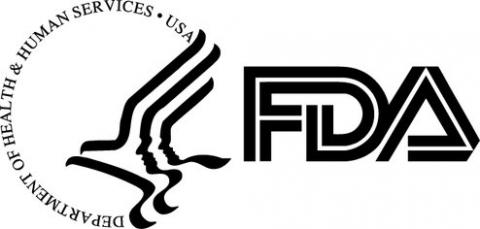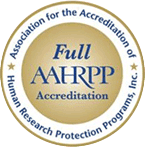UI’s Institutional Conflict of Interest in Human Subjects Research


Martha Hedberg
Effective January 1, 2016, the University of Iowa’s Institutional Conflict of Interest in Human Subjects Research Policy (Chapter 18.7) was operationalized as a result of Human Subjects Research Accreditation standards. This policy affects human subjects research studies designed to answer questions about the effects or impact of a particular drug, treatment or diagnostic/therapeutic device.
This policy states,
“As a steward of the public trust, The University of Iowa is obligated to ensure its research involving human subjects is carried out with integrity, open inquiry, and rigorous analysis, free from potential financial conflicts of interest that might affect the sound judgment of its faculty, staff, and students. When financial interests of the University or its University officials exist and create real or potential bias to the outcome of its research, an institutional conflict of interest exists.
For example, the University or one of its officials may have a financial interest in a company sponsoring research covered by this policy or may hold a proprietary interest in a product that is the subject of the research. When such research involves human subjects and the institution maintains its financial interest, the conflict of interest is presumed to be unacceptable. Such research will only be allowed to proceed at the University if there are compelling circumstances justifying the research to be conducted despite the presence of the financial conflict.”
Unlike the University of Iowa Conflict of Interest in Research Policy, the Institutional Conflict of Interest policy requires University officials to disclose all financial interests, regardless of relatedness to his or her University responsibilities. But these interests are disclosed in the eCOI disclosure portal just like the individual interests of key personnel on research teams. These interests are to be reported because a University official acting within his or her authority on behalf of the institution, could directly and significantly affect, or reasonably appear to affect, the design, conduct, reporting, review, or oversight of human subjects research, particularly research on the effects of drugs, treatments, or diagnostic/therapeutic devices.
According to this policy, a "University Official" includes individuals in the following roles:
- University President
- Provost
- Vice Presidents
- Associate Provost
- Associate Vice Presidents
- Treasurer
- Controller
- Deans
- Associate and Assistant Deans
- Departmental Executive Officers
- Heads of Regental Centers and Institutes
University officials should report the following interests:
- Royalties or other payments from licenses or other technology transfer agreements related to University intellectual property rights from a for-profit company
- Payments (e.g. salary, consulting fees, honoraria, gifts, etc.) received from a for-profit company
- Any equity or other ownership in a non-publicly traded company
- Any position giving rise to a fiduciary duty in a for-profit company
The University of Iowa, as an institution, may also have significant financial interests. These financial interests include:
- Royalties or other payments from licenses or other technology transfer agreements related to University intellectual property rights from a for-profit company
- Gifts/gifts-in-kind and donations received from a for-profit company
- Equity or ownership interest (other than a mutual fund) in a publicly traded company
- Any equity interest or an entitlement to equity of any value, including options or warrants, in a non-publicly traded company
These interests will be reported to the Conflict of Interest in Research Office by the University of Iowa Research Foundation and the University of Iowa Foundation. Conflict of Interest in Research staff will enter these interests into the eCOI disclosure system.
This policy is under the authority of the Office of the President, but administrative aspects of the policy will be carried out by the Conflict of Interest in Research Office. This means that the Conflict of Interest in Research Office will collect and assess financial interest disclosures submitted in the eCOI portal. Assessment includes determining, (1) if a reported financial interest reaches certain thresholds and creates a significant financial interest, and (2) whether or not that significant financial interest is related to human subjects research that is being conducted at the University of Iowa.
The Conflict of Interest in Research Office determines, with the consultation of the Conflict of Interest in Research Officer, whether or not an institutional conflict of interest in human subjects research exists. If the interest exists with a University official, that official will be asked to recuse him/herself from all business decision related to the interest, or to divest from the interest. If neither of these are practical options, then the institutional conflict of interest in research committee will review the case and determine a) if the interest can reasonably be managed, and if so, b) recommend management strategies to mitigate the impact of the interest on the research. In the case of a financial interest held by the University itself, the case will go directly to the committee where the same determinations will be made.
The institutional conflict of interest committee is comprised of the Conflict of Interest in Research Committee plus two additional members – the President or his/her designee and an unaffiliated member of the greater community.
For additional information, please consult the Institutional Conflict of Interest in Human Subjects Research Policy. For questions, please contact Martha Hedberg, COI Specialist, at 384-4256 orMartha-hedberg@uiowa.edu
New FDA Site Inspection Guidance


Therese Barenz
The Human Subjects Office (HSO) recently created an FDA Site Inspection Guide to provide practical advice for University of Iowa Principal Investigators and research staff preparing to undergo a Food and Drug Administration (FDA) inspection of a clinical trial. This Guide outlines pre-inspection preparations, recommended study team conduct during the inspection, and directions for post-inspection activities. It also reminds researchers of the requirement for a Compliance and Education Specialist from the HSO to attend the opening and closing sessions of all FDA inspections. The PI must notify the HSO by email (irb-monitors@uiowa.edu) when the initial notification of an inspection is received from the FDA.
The FDA Site Inspection Guide is located on the HSO website which also offers hyperlinks to additional information for researchers preparing for a FDA site inspection.
For information about these new requirements and the new FDA Site Inspection Guide, mark your calendar to attend the ICTS Clinical Lecture Series presentation on March 3, 2016 from 12-1 PM in C44-A GH. Staff members from the IRB Compliance Program will provide an overview of the new UI FDA site inspection guidance.
Using Social Media to Recruit for Research


Patricia Katopol, PhD
Finding subjects can be challenging for any researcher. In some cases, recruitment challenges lead to the enrollment of too few subjects to obtain meaningful findings or may have to close the study before completion. One reason for the lack of participants is that people may be unaware of a research study or of a clinical trial for a specific condition. Cultural norms about research participation and historical events, such as the Tuskegee Syphilis study, can also hinder participation by some groups. Despite their best efforts, both biomedical and social/behavioral researchers continue to have difficulty finding subjects.
One way to meet the recruiting challenge is to use social media, such as Facebook and BlackPlanet, online meeting places where people can forge new networks or maintain existing relationships. Facebook communities such as Crohn's Disease & Ulcerative Colitis Support Group, Alzheimers and Dementia Caregivers Support Group, and Thyroid Cancer Sisters provide members with information about the condition and treatment. Patients no longer see their physician as the only source of medical information, but seek and share information amongst themselves.
People with similar political beliefs, interests in social or behavioral issues (such as weight loss) also band together on social media sites. Recruiting with social media takes advantage of the connectivity of people with like interests and experiences and the diversity of internet users, reducing the search efforts needed to find participants. However, there is a risk of attracting ‘professional respondents’ and those who represent themselves as something other than a member of the intended population for the study.
Before using social media to recruit, consider the norms of the community and the rights of the members. They did not affiliate with each other or create their community to be a convenient source of research subjects. Online communities have their own norms and may question or delete posts that do not follow them. Researchers should not join an online group just to announce a study. Participation requirements may range from simply announcing yourself and your purpose to not using the site for research at all. Researchers must provide an overview of these participation requirements to the IRB in the HawkIRB application along with the proposed plans for this recruitment method.
Before posting a recruitment message, ‘listen’ to members by reading through a number of posts over time. Understand the membership. If recruiting for a clinical trial - are members mostly newly diagnosed? Caregivers? Lay experts who are knowledgeable about the medical issues and literature? Do members seem to know about clinical trials or do they need education about these opportunities? Are there comments about trials that might dissuade or encourage members from participating? In addition to posting news about upcoming trials, social media can also be used to disseminate trial results. Keep in mind that IRB approval is required prior to posting recruitment messages or study results.
Communications between the researcher and people in social media communities must be reviewed and approved by the IRB using the same regulatory criteria (45 CFR 46) and ethical considerations (Belmont Report) as other recruitment methods. The PI should also be aware that sensitive information may be shared inadvertently during the recruitment process, so communicating with individual subjects should not take place on social media. Rather, studies that use social media to recruit should ask subjects to call, mail or communicate by use of a secure website rather than by e-mail or social media messaging.
Issues regarding privacy protections, minimizing risks, and voluntary consent still exist when contacting prospective subjects via social media.
Using social media can be a useful recruiting strategy and one that contributes greatly to the success of the project. However, while the recruiting environment may be new, the need for IRB approval and protecting subjects’ rights, safety and welfare remain the same.
Promises, Promises: I assure you…what, exactly?


Sarah Heady
“Assurance” is not a term you hear much in the colloquial vernacular; it carries overtones of jargon but essentially means a promise—I assure you I will avoid jargon as much as possible in this article. See how that works? The IRB requires Principal Investigators (PIs) to confirm 13 promises—assurances—before any approved human subjects research may begin.
The Assurance Document is one of the final pieces of your HawkIRB application, and arguably the most important attachment from a regulatory perspective. Essentially, it is an agreement to conduct ethical research in accordance with federal regulations and UI policies. The Assurance Document includes the list of pledges a Principal Investigator makes to the IRB about the oversight and the conduct of the study. This document is also signed by the PIs’ departmental executive officer (and the faculty advisor if the PI has any type of student designation.)
“I am ultimately responsible for the conduct of the study” is the first assurance on the list. This means the Principal Investigator is the person accountable for every aspect of the research protocol—the person who earns the “buck stops here” decider status.
In addition to all other PI responsibilities, assurances 4 and 5 include these promises:
- The research will only be performed by qualified personnel.
- All persons assisting with the research are adequately informed about the protocol and their research-related duties and functions.
Lofty responsibility yes, but what does it look like in practice? PIs have several resources available through the Human Subjects Office website to help with training research staff. This includes:
- CITI Training (These online courses on the ethical conduct of research are required if a person will be listed on the HawkIRB application.)
- HawkIRB Training Sessions (Learn from a human in person! We’ll cover technical aspects of HawkIRB and provide guidance on specific sections of the application.)
- ICON Course for Researchers (Short video recordings of core courses covering research-related presentations - such as informed consent/assent, privacy and confidentiality protections, managing research risk, roles of the student PI and faculty advisor, etc. The IRB ICON Course for Researchers also includes recordings of the HawkIRB training sessions, section by section. These recordings are available anytime via the access portal on the Human Subjects Office web site.)
- UI IRB SOP & Researcher Guide (Listed in the menu bar on the Human Subjects Office web site as the “UI Investigator’s Guide.” Don’t let the length intimidate you. This is a reference document. Search the table of contents for answers to specific questions about conducting human subjects research.)
- Researcher Handbook (This link to the document on the website of the Office of the Vice President for Research and Economic Development leads to Section 3.c about human subjects research, but the Handbook is also a great resource for any research-related questions)
Other methods to make sure everyone is qualified and understands their research duties include having regular research meetings, training staff to conduct study procedures, reviewing the work of research team members, and practicing good communication. (For example, don’t forget to update all research team members if study procedures change.)
These assurances also mean, the Principal Investigator is the person who accepts full responsibility for study conduct, including the errors of research team members (after all, everyone makes mistakes—I certainly do). This responsibility extends to the description of study procedures in the HawkIRB application. Even if a PI authorizes a delegate to access the HawkIRB system on his/her behalf, the PI is ultimately responsible for the accuracy and quality of the application. Watch for a future IRB Connection article where we explore the reporting requirements for these errors (incidents of noncompliance) as well as other types of reportable events.
If you follow this guidance, I cannot assure you that all research procedures will go forth perfectly without any errors or unexpected problems. However, I assure you that this guidance is intended to help you have a better understanding of the promises the PI makes to the IRB in the Assurance Document about oversight and conduct of the study.


